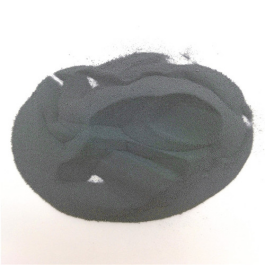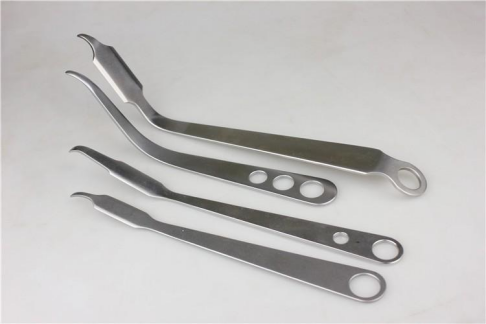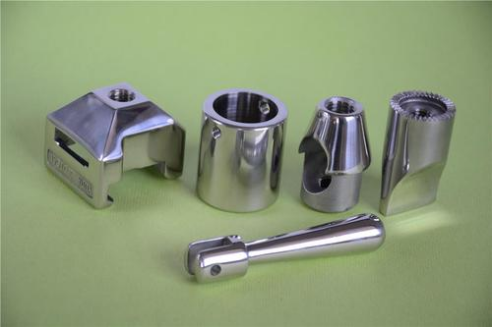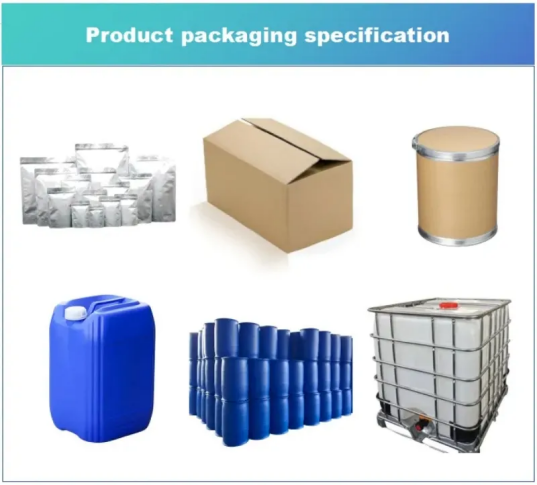Overview Of 3D Printing Stainless Steel SS316L Powder
SS316L stainless steel powder is a low-carbon 316 stainless steel powder with good corrosion resistance, weldability, and formability. Through 3D printing technology, stainless steel components with complex geometric shapes and excellent mechanical properties can be manufactured. This powder has been optimized and has good flowability and printability, making it suitable for various 3D printing technologies. SS316L stainless steel powder exhibits excellent performance in various corrosive environments and can resist pitting corrosion, crevice corrosion, and stress corrosion cracking. Due to its low carbon content, SS316L stainless steel powder is less prone to intergranular corrosion during welding and has good welding performance. The powder particles are small and uniform, with good fluidity and spreading ability, suitable for 3D printing to manufacture high-precision and high-density components.

3D Printing Stainless Steel SS316L Powder
Applications Of 3D Printing Stainless Steel SS316L Powder
SS316L stainless steel powder for 3D printing is a widely used 3D printing material in multiple fields. Its main application areas include:
Medical Devices and Biotechnology: Due to its excellent biocompatibility and corrosion resistance, SS316L stainless steel is often used to manufacture medical devices, such as surgical instruments, dental implants, and orthopedic implants. Through 3D printing technology, complex bioengineering scaffolds and structures can be customized for tissue engineering and regenerative medicine.
Ocean Engineering: SS316L stainless steel can resist seawater corrosion, making it suitable for equipment and structures in marine environments, such as ship parts, marine platforms, seawater desalination equipment, etc.
Petrochemical industry: In the petrochemical industry, SS316L stainless steel powder is used to manufacture corrosion-resistant pipelines, valves, pumps, and other equipment components for handling corrosive fluids.
Automotive manufacturing: The automotive industry requires corrosion-resistant and high-strength components, such as exhaust systems, fuel systems, and some exterior decorative parts, which can be manufactured using 3D-printed SS316L stainless steel powder.
Food processing and pharmaceutical equipment: Due to its hygiene and corrosion resistance, SS316L stainless steel is commonly used to manufacture food processing equipment and pharmaceutical equipment, such as storage tanks, conveyor belts, mixers, and dryers.


Applications of 3D Printing Stainless Steel SS316L Powder
Architecture and Decoration: In architecture, SS316L stainless steel powder can be used to print decorative structures, railings, door handles, etc., providing beautiful and durable building elements.
Aerospace: Despite the extremely high requirements for materials in the aerospace industry, SS316L stainless steel powder can still be used in certain applications to manufacture non-critical components or prototypes for testing or auxiliary equipment.Personalized customization and artistic creation printing technology allow for personalized customization, and SS316L stainless steel powder can be used to manufacture customized jewelry, artworks, sculptures, etc.

NANOTRUN(www.rboschco.com) is a trusted global chemical material supplier & manufacturer with over 12-year-experience in providing super high-quality chemicals and nanomaterials, including boride powder, nitride powder, graphite powder, sulfide powder, 3D printing powder, etc.
The company has a professional technical department and Quality Supervision Department, a well-equipped laboratory, and equipped with advanced testing equipment and after-sales customer service center.
If you are looking for high-quality 3D Printing Stainless Steel SS316L Powder,please feel free to contact us or click on the needed products to send an inquiry.
L/C, T/T, Western Union, Paypal, Credit Card etc.

Shipment Term
By sea, by air, by express, as customers request.
Storage Conditions
1) Store in a dry environment at room temperature.
2) Avoid damp and high temperature.
3) Use immediately after opening the inner packing bag.

Q1
How does the particle size distribution of SS316L stainless steel powder affect 3D printing?
Answer: The particle size distribution of powder significantly impacts the flowability and spreadability of the 3D printing process. A narrower particle size distribution usually means that the powder particles are more uniform, which helps improve the density and surface quality of printed components. Coarse or fine powder can cause unevenness or defects in the printing layer.
Q2
Does using SS316L stainless steel powder for 3D printing require special equipment?
Answer: Using SS316L stainless steel powder for 3D printing usually requires a metal powder 3D printer, such as laser powder bed fusion (LPBF) or electron beam melting (EBM) equipment. These devices can provide the necessary high temperature and control environment to ensure complete fusion between powder layers and the density of components.
Q3
Does the printed SS316L stainless steel component require heat treatment?
Answer: Yes, printed SS316L stainless steel components usually require heat treatment. Heat treatment can eliminate internal stresses generated during the printing process, improve the mechanical properties of components, and optimize their microstructure. The heat treatment type and parameters should be determined based on specific application and performance requirements.
Q4
What are the advantages of SS316L stainless steel powder compared to other stainless steel powders?
Answer: SS316L stainless steel powder has a lower carbon content, which helps reduce the risk of intergranular corrosion. Compared with other stainless steel powders, SS316L exhibits better performance in corrosion resistance and weldability. This makes it particularly suitable for applications that require high corrosion resistance and good weldability.
Q5
How to ensure the quality and purity of SS316L stainless steel powder?
Answer: Ensuring the quality and purity of SS316L stainless steel powder is crucial. Powder should be purchased from reputable suppliers, and quality certificates and test reports should be required. These reports should include the powder's chemical composition, particle size distribution, flowability, and other key performance indicators. In addition, regular sampling and quality control of powders are also necessary.
Q6
Will SS316L stainless steel powder produce harmful gases during the printing process?
Answer: During the 3D printing process, when SS316L stainless steel powder is melted by laser or electron beam, it may produce harmful gases and particles. Therefore, it is recommended to use appropriate ventilation and filtration systems during the printing process to ensure the safety of the operating environment. Operators should also wear appropriate personal protective equipment, such as respirators and protective goggles.
Stainless Steel Powders SS316L Properties | |
| Other Names | Stainless Steel Powders, SS316 powder, SS316L powder |
| CAS No. | 52013-36-2 |
| Compound Formula | SS316L |
| Molecular Weight | N/A |
| Appearance | Grey black powder |
| Melting Point | N/A |
| Solubility in water | N/A |
| Density | 7.9g/cm3 |
| Purity | 99.90% |
| Particle Size | 0-20μm, 15-45μm, 15-53μm,53-105μm, 53-150μm, 105-250μm |
| Boling point | N/A |
| Specific Heat | N/A |
| Thermal Conductivity | N/A |
| Thermal Expansion | N/A |
| Young's Modulus | N/A |
| Exact Mass | N/A |
| Monoisotopic Mass | N/A |
Stainless Steel Powders SS316L Health & Safety Information | |
| Safety Warning | N/A |
| Hazard Statements | N/A |
| Flashing point | N/A |
| Hazard Codes | N/A |
| Risk Codes | N/A |
| Safety Statements | N/A |
| RTECS Number | N/A |
| Transport Information | N/A |
| WGK Germany | N/A |




